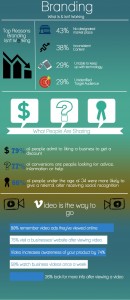Everyone in business is looking to decrease absenteeism. Whenever it’s due to illness, unavoidable circumstances, low morale and even (occasionally) employees pushing their luck a little, absenteeism has a big impact on businesses large and small. Sick pay, lost productivity and various other factors can create a significant cost for businesses – but is presenteeism, absenteeism more conscientious twin, actually costing your business even more?
Presenteeism is a phenomenon where employees attend work, but don’t perform to their full capacity. This could be because they feel unwell, (something which then affects more people in the workplace as the illness spreads) they are experiencing stress in their personal life, or they have simply worked too much. In workplaces with a culture of presenteeism, many employees will work through lunch, take work calls at the weekend, and stay an extra few hours each evening; all to the detriment of their wellbeing.
However, it seems this doesn’t translate to higher productivity and reduced business costs. According to the GCC Insights report by Global Corporate Challenge, presenteeism is ten times more expensive to businesses than employees simply not turning up to work, and far more common. The lack of conversation around the subject springs from the fact that while absenteeism is easy to track (an employee is either present, or not), presenteeism can be harder to quantify.
Presenteeism and the USA
Presenteeism is a global problem, and perhaps the biggest threat to workplace productivity. However, it is possible to argue that this is something the USA is particularly affected by. There is no federal law requiring paid sick days in the United States, or any law limiting the maximum working hours employees can work in one week. It is the only country in the Americas without a national paid parental leave benefit.
The United States is also the only OECD country that does not require employers to provide any paid leave to its employees. While 77% of private employers offer paid vacation to their employees, and full-time employees earn on average 10 vacation days after one year of service, some employers offer no holiday. This is compared to (including paid public holidays) at least 28 days paid holiday in the UK, five weeks in France and 30 days in Australia.
While there’s certainly plus sides to employers having the freedom to decide these matters for themselves, surprisingly the USA is only the fifth most productive country – behind Luxembourg, Ireland, Norway and Belgium. All of these countries have generous holiday and parental leave entitlement, while in Luxembourg, Norway and Belgium employees are paid 100% of their salary for at least a month when they are sick – suggesting that fewer benefits certainly doesn’t equal higher productivity.
This isn’t the place to debate the relative advantages and disadvantages of the USA’s labor laws (which is something for business leaders and the voting public to discuss). However, it isn’t illogical to suggest that presenteeism is probably more a problem when cultural and financial pressures mean that people will be turning up to work no matter how they feel, or the personal obligations they may have.
A big advantage for US businesses is that it’s in their hands to decide how they deal with this, with the freedom to try out different systems to see what’s most effective for their business and workforce.
Reducing Presenteeism in Your Workplace
So what steps can a business owner take to reduce presenteeism in their organization? Here are a few ideas.
Prioritize corporate wellbeing
Investing in the well-being of your employees is both a human and business decision and will result in a happier, healthier and often more loyal workforce. Whether you fill your workspace with healthy snacks, offer gym memberships or make a good work/life balance your corporate priority, small acts can have a big impact.
Encouraging practices such as meditation needn’t cost a huge amount (a weekly company-wide email with breathing exercises and other tips is a good start) and can be extremely beneficial. Studies suggest that meditation can boost the immune system, while its effect on mood and stress levels can be extremely profound. The result is employees who come down with niggly colds and illnesses less often, are naturally less stressed and don’t force themselves through the day when they are feeling low.
Have the option to work from home
In the modern workplace, there are many roles that can be completed remotely – with screen-based, cloud-sharing tasks often easily accessible from an employee’s home. And even in businesses where this isn’t a readily available option (such as a restaurant or shop), there are tasks such as updating the brand’s social media accounts or catching up on bookkeeping that doesn’t have to be completed on the premises.
Clearly, if someone has the earth-shattering flu and can barely open their eyes without a blinding headache, let alone look at a computer screen, they simply need some time to recover. The “work from home” option shouldn’t be an expected requirement that means ill employees never get a chance to truly rest. However, there are lots of nasty little bugs which would severely impact productivity if they spread around the workplace, but aren’t necessarily completely incapacitating.
If your employees are empowered to judge for themselves whether they are capable of a few light duties at home, you’ll ensure they won’t drag themselves to work with a headache and bad stomach that then infects half your workforce. This is especially important when you consider that this will include those whose constitution isn’t quite as strong, and are subsequently laid up for a week.
It’s also a great option for employees who live with long-running and chronic conditions, such as Lupus, IBS or Anxiety Disorder. Presenteeism can especially affect these individuals, as they battle through various daily symptoms to attend work and never get the rest they find necessary – which ultimately exacerbates their illnesses and can lead to extended sick leave. By having the option to work from home when they experience milder symptoms, they are better able to manage their condition.
Think about policy and workplace culture
There are lots of factors that can lead to high levels of presenteeism, such as:
- A punitive approach to those who have taken time off sick. This could even be the unspoken expectation that people should soldier on and implied or stated disapproval when they stay at home.
- A company culture where the person who stays the latest is most rewarded – for example, getting employees in line for promotion to prove their devotion through hours of unpaid overtime.
- The expectation of 24-hour availability, regularly contacting employees on their days off and late into the evening.
- An unmanageably high workload which keeps people at their desks well past their paid hours.
Considering your workplace policies and company culture can help you walk the line between offering the authority, rules and regulations people expect of you as an employer, and driving productivity down by placing too much pressure on your staff. This isn’t always easy because every individual employee will need an individual response, which is why creating broad policies that can be applied with thought and care to each person’s situation is important.
For example, if an eighteen-year-old employee is mysteriously absent every Sunday and spends the rest of the week discussing their raucous Saturday nights out, this will obviously warrant an entirely different response to the mother who is currently caring both for her children and unwell father and is consistently late. By creating an environment where staff can communicate their issues with you, and you can offer flexibility, you will help both them and your business.
Business & Finance Articles on Business 2 Community(48)




